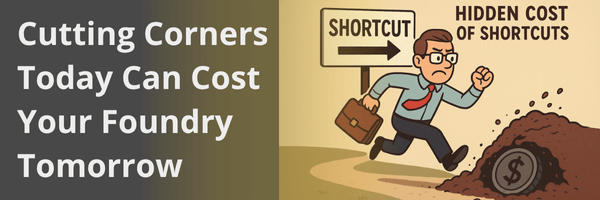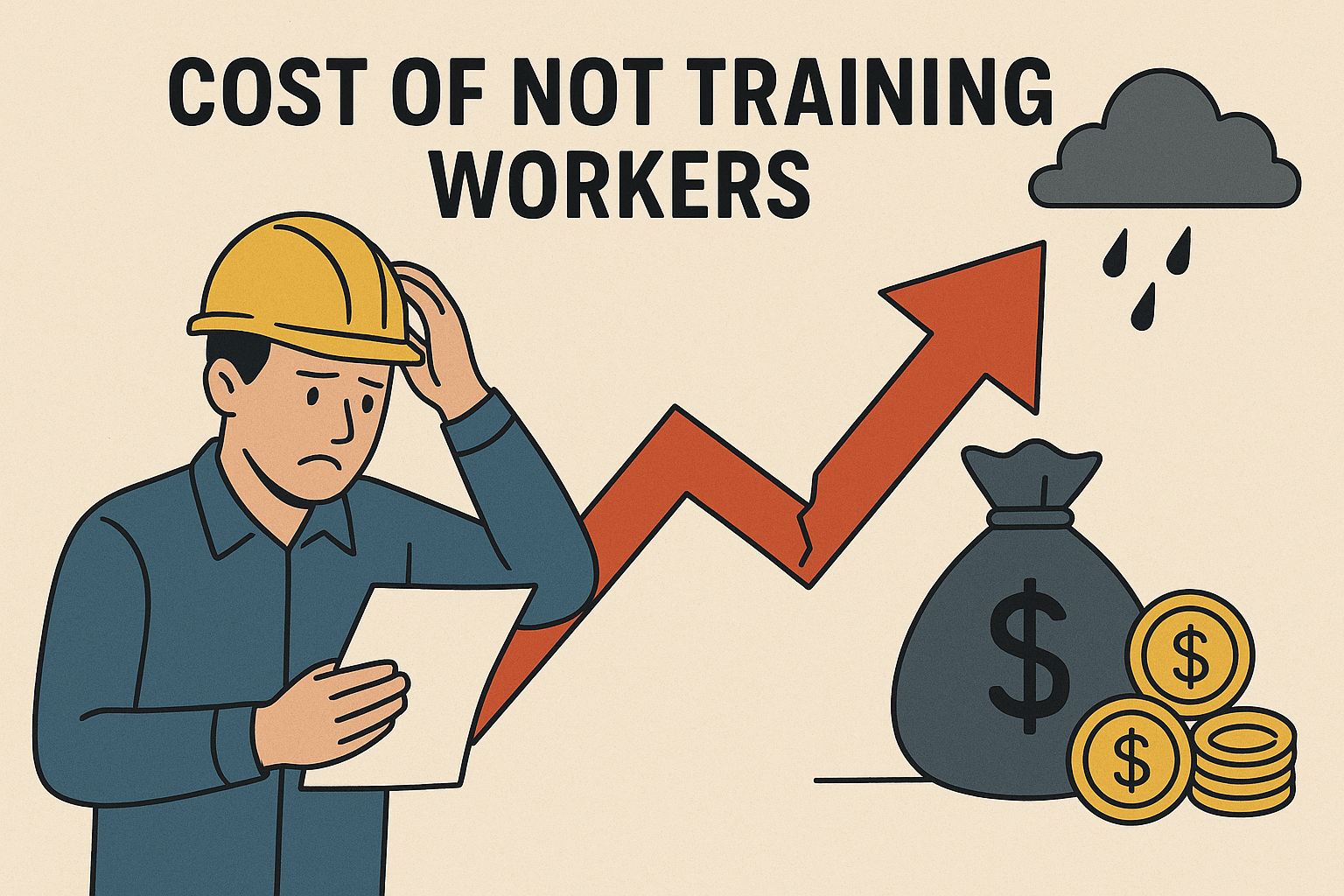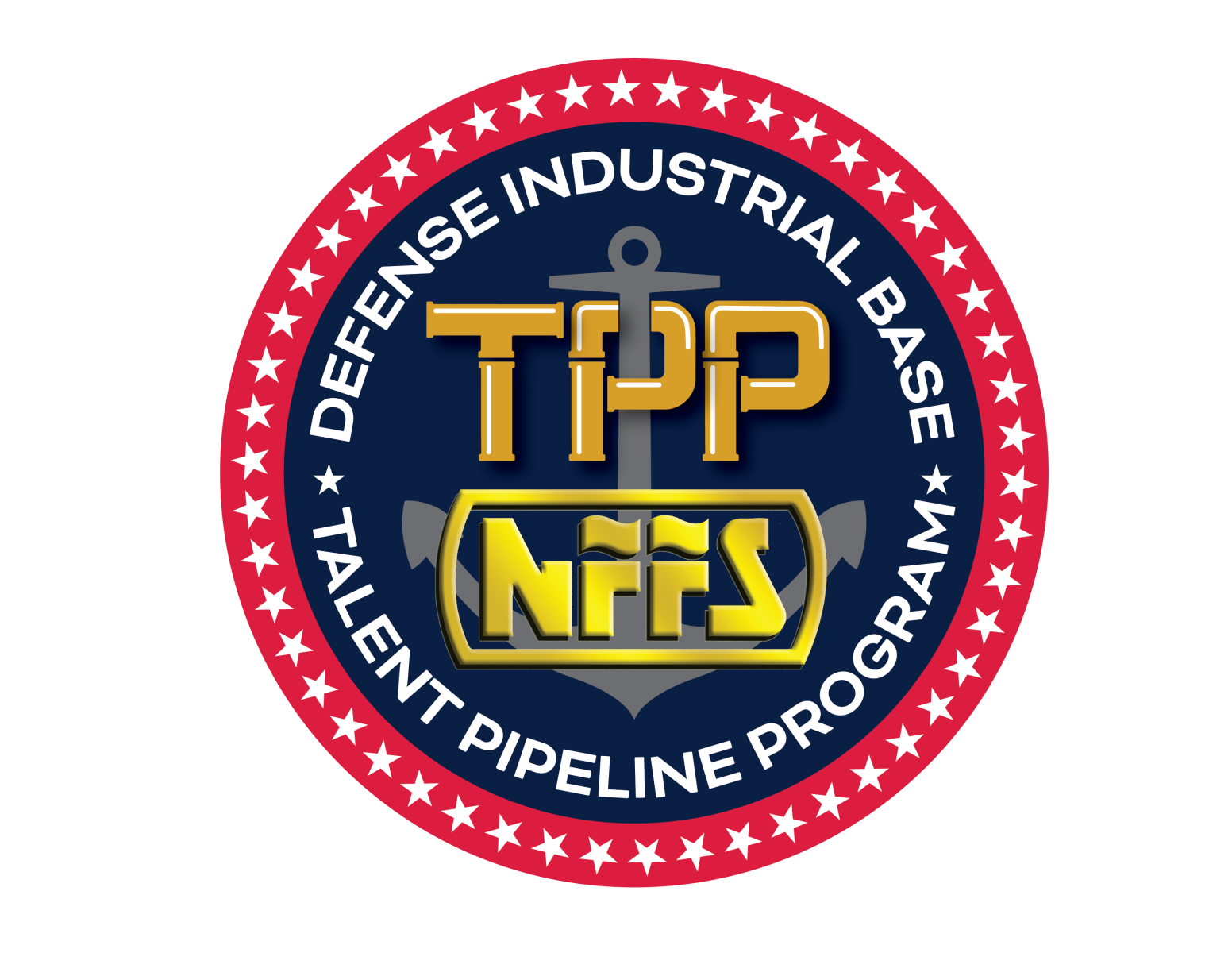Hidden Cost of Shortcuts: Why Workforce Development Can't Be Ignored

Recently, I rented a car from a discount company because it was nearly $100 cheaper than a major provider. At first glance, it seemed like a smart decision. I returned the car on time, filled the tank at the station right next to the rental facility, and assumed the transaction was complete.
Days later, however, I received my receipt and was surprised to see late fees and extra rental charges. The company had marked my car as being returned more than 12 hours even though I had proof otherwise. Now I am spending time disputing $125 in charges that never should have happened. What appeared to be a simple savings has turned into frustration, wasted time, and additional costs.
This experience illustrates a simple truth: shortcuts often end up costing more than the effort required to do things correctly from the start.  The same principle applies to workforce development in foundries. On the surface, it might seem easier to skip investing in structured talent acquisition or employee training programs. Some companies may avoid engaging employees in skill development, career pathways, or mentorship, thinking it maximizes time and resources in the short term. But ignoring workforce development carries hidden costs that eventually surface in significant ways.
The same principle applies to workforce development in foundries. On the surface, it might seem easier to skip investing in structured talent acquisition or employee training programs. Some companies may avoid engaging employees in skill development, career pathways, or mentorship, thinking it maximizes time and resources in the short term. But ignoring workforce development carries hidden costs that eventually surface in significant ways.
A skilled and well-trained workforce is the backbone of any successful metalcasting operation. It affects every part of the business:
- Productivity: Employees who understand processes, equipment, and quality standards perform more efficiently and reduce bottlenecks on the production floor.
- Quality and safety: Properly trained staff follow protocols, reducing scrap, rework, and accidents, which directly affects costs and reputation.
- Retention and engagement: Workers who see opportunities for growth are more likely to stay, reducing turnover and the constant need to recruit and train new employees.
- Innovation and problem-solving: Experienced and trained employees can troubleshoot production issues quickly and contribute to process improvements, giving your foundry a competitive edge.
Foundries that delay workforce development may think they are saving time, but the reality is similar to my car rental situation. Just as I now have to spend hours disputing charges, companies that shortcut workforce development eventually spend far more time, money, and energy fixing problems caused by turnover, skill gaps, and production inefficiencies.  Recognizing this, NFFS has invested time and resources to bring the Talent Pipeline Program (TPP) to our members. We are fortunate to be the only trade association with a cohort in this national program, giving members access to proven tools and strategies for attracting, hiring, and retaining skilled employees. The program also includes free network coaching, so members are supported as they implement solutions tailored to their foundries.
Recognizing this, NFFS has invested time and resources to bring the Talent Pipeline Program (TPP) to our members. We are fortunate to be the only trade association with a cohort in this national program, giving members access to proven tools and strategies for attracting, hiring, and retaining skilled employees. The program also includes free network coaching, so members are supported as they implement solutions tailored to their foundries.
Workforce development is not an optional part of running a foundry, it is essential. It protects productivity, ensures quality and safety, strengthens retention, and prepares your operation for future growth. The next TPP cohort begins soon, and the deadline to join this year's group is November 15. Don't wait until workforce challenges slow down your operations or start costing you more than you anticipate. Invest in a system that strengthens your people, builds your capabilities, and secures the future of your foundry.
Contact Bill Padnos at bill@nffs.org for more information about the TPP and how to get started in improving your talent acquisition and retention systems.
